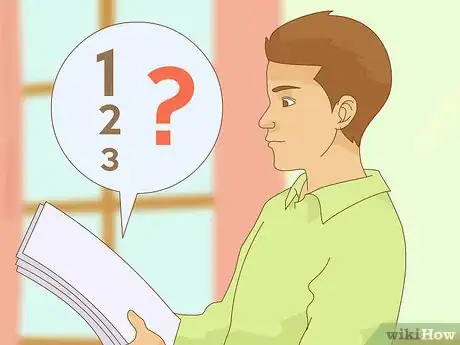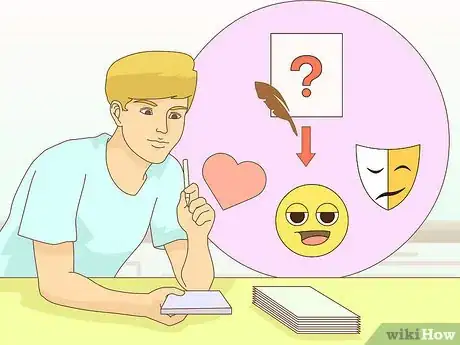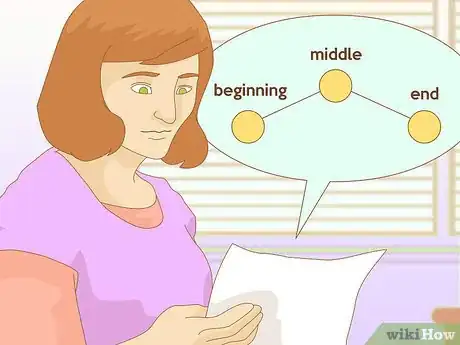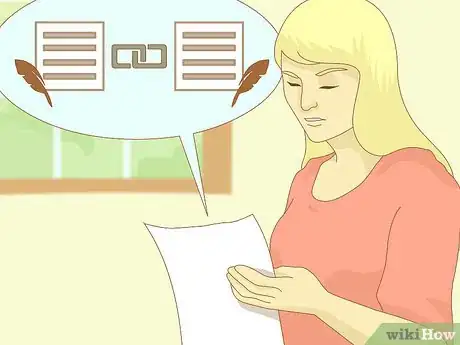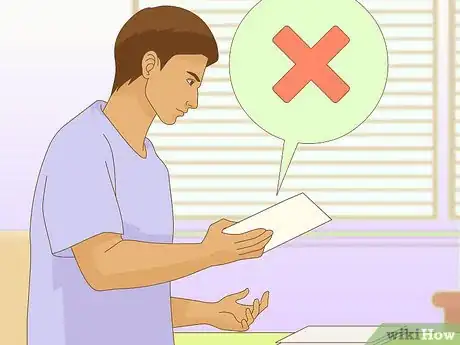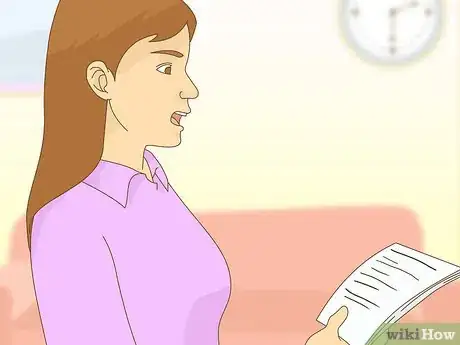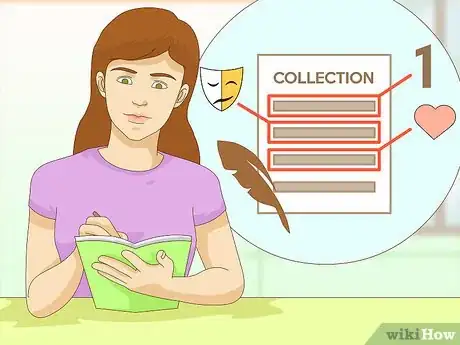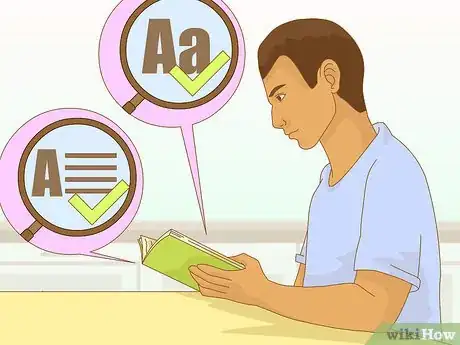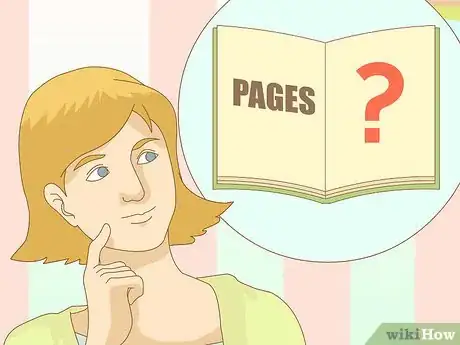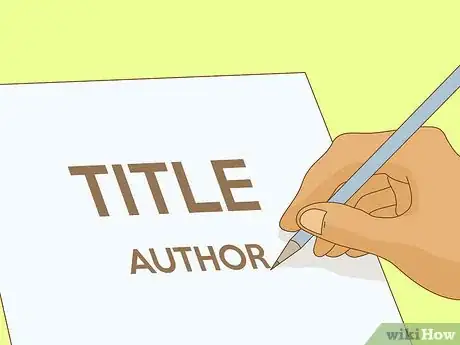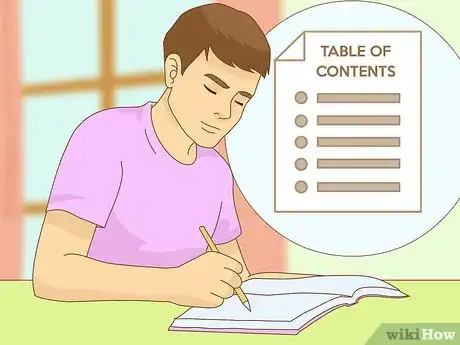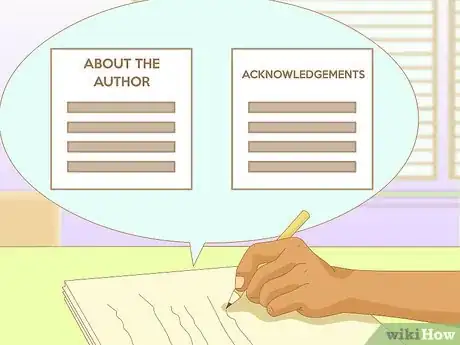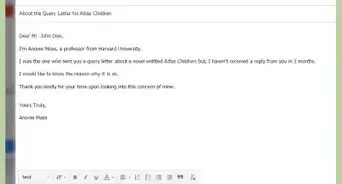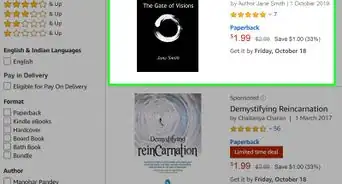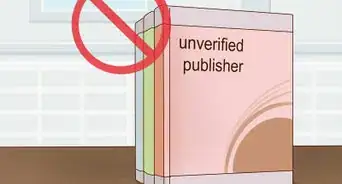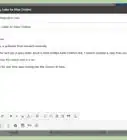This article was co-authored by Stephanie Wong Ken, MFA. Stephanie Wong Ken is a writer based in Canada. Stephanie's writing has appeared in Joyland, Catapult, Pithead Chapel, Cosmonaut's Avenue, and other publications. She holds an MFA in Fiction and Creative Writing from Portland State University.
wikiHow marks an article as reader-approved once it receives enough positive feedback. In this case, 93% of readers who voted found the article helpful, earning it our reader-approved status.
This article has been viewed 45,133 times.
A chapbook, or a collection of poems, is an excellent way to display your work. It may feel like a daunting task to arrange your poems into a collection, as you will need to consider how to organize them into a complete work of art. You should start by organizing your poems so they make up a cohesive whole. You should then polish and format the collection so it is ready for publication.
Steps
Organizing the Poems
-
1Identify your strongest poems. Start by reading through your poems one by one. You may have a stack of forty to fifty poems that you are considering or a pile of hundreds. Read each poem and then put them in two piles: strong and weak. You can then look more closely at the poems in the strong pile and include these in the collection.[1]
- When you are putting poems in these piles, do not put too much stock in poems that have already been published or have won accolades. You should try to use your own judgement when deciding if a poem is strong or weak and not rely on outside opinions.[2]
- You should also use this step to help you select poems for the collection and not as an organizing principle. Ordering your poems from strongest to weakest in a collection will not showcase your best work as a whole and may leave the reader deflated or disinterested by the time they get to the end of the book.[3]
-
2Find a unifying theme or form. Many successful poetry collections will present a unified theme to the reader and include poems that speak to this theme. This will allow the reader to connect to the poems on a poem-by-poem level and the collection as a whole.[4] [5]
- For example, you may read through your poems and realize many of your strongest poems discuss queerness and being the outsider in a group. You may then use queerness as the theme for your poems and make sure that each poem relates back to this theme.
- You may also notice that many of your strongest poems follow a specific poetic form, such as the sonnet or the haiku. You may then decide to use this poetic form as the unifiers and only include poems that use this form.
Advertisement -
3Have a narrative arc. The collection should feel like it has a beginning, middle, and end, where you should start somewhere and end up somewhere else. The goal should be to take the reader on an emotional journey. The journey may end with a resolution of some kind or a conclusion.[6]
- Think about how each poem sets a certain mood or tone and then place them side by side. Notice if the mood or tone shifts if you place one poem next to another.
- For example, you may notice that you have a poem about being queer in high school and another poem about being queer as an adult. You may decide to place several poems after the high school poem so there is a build up and a change that happens by the time the reader gets to the adult poem about queerness.
- As well, if you have recurring images or phrases in your poems, you may spread them out so they do not feel clustered together. You may also notice that certain poems fit together better side by side and certain poems become more meaningful when they fall at a certain point in the narrative arc of the collection.
-
4Link certain poems together. You can also try linking your poems together so they make sense on a micro level. This is often done with poems that feel more emotional and abstract. You may link poems together based on wording used in each poem or images that feel connected.[7] [8]
- For example, you may note a certain color in one poem and link it with another poem that explores the same color in a more abstract way. Or, you may link three poems together based on a repeated line or an image they all share.
-
5Put your strongest poem first. Like the first line of a novel, the first poem in your collection is crucial. It will tell your reader what they can expect in the rest of the collection and compel them to continue reading. You should try to have your strongest poem as the first poem in your collection so you can showcase your best work upfront.[9]
- You may also decide to then alternate between stronger poems and weaker poems so the reader gets a wide sample of your voice and so the stronger poems can help to illuminate weaker poems.
- However, you should not try to hide really weak poems by using stronger poems as a distraction. Your reader will likely notice this and question why weaker poems were included in the collection in the first place.
-
6Leave out poems that do not fit with the whole. You should be willing to let go of poems that do not fit with the rest or that do not mesh with the collection as a whole. Part of arranging a strong poetry collection is being willing to admit when a poem does not work and needs to be cut.
- Remember that you can always save any poems that are cut for future collections or other projects. Just because a poem does not fit with your current collection does not mean it will not find a home among other poems in the future.
Polishing the Collection
-
1Read the collection out loud from start to finish. Once you have organized your poems into a collection, you should read it out loud to yourself from start to finish. Listen to how each poem sounds next to each other and notice if there is a build up of emotion, mood, and tension as the collection progresses.r[10]
- You should also read the collection out loud to a trusted friend or peer and allow them to read the collection on their own. They may be able to give you useful feedback and constructive criticism about the ordering of your poems. Having a second pair of eyes on the collection will likely only make it better.
-
2Consider dividing the collection into sections. You may decide to frame the collection by dividing it into sections. You may divide the poems based on the narrative arc of the collection, such as poems that discuss the beginning, poems that discuss the middle, and poems that discuss the end. Or, you may break up the poems based on a theme or on specific images.[11]
- Many poetry collections do not title or name the sections, as titles can feel too obvious and telling to the reader. If you decide to include section titles, try to make them still appear mysterious to the reader so the reader does not feel they are being told what to expect in each section.
- You may decide to begin and end each section with strong poems that link each section together. This will help to book end each section but still allow the sections to link together into a cohesive whole.
- Keep in mind you do not need to have sections in your collection, especially if you feel the collection does better without any breathing space or any interruptions. Some poetry collections benefit from having a straight narrative with no breaks or sections.
-
3Do a spelling and grammar check. You should also polish up the language in the collection to ensure it is grammatically correct and free of misspelled words. Do not rely on the spellcheck feature on your computer to do this for you. Instead, read the collection backwards, starting at the last page and moving backward. This will allow you to pay attention to each word and ensure it appears correctly on the page.[12]
- Because you are writing poetry and access your creativity, you may decide to play around with language. If there is a misspelled word or a grammatically incorrect sentence in your poems, it should be there on purpose and it should be obvious to the reader that it is intentional.
Formatting the Collection for Publication
-
1Determine the page count of the collection. Most poetry collections range from 50 to 70 pages.[13] Often, less is more when it comes to poetry collections. Avoid overwhelming the reader with too many poems and too many sections. Try to keep the poetry collection concise, but still true to your artistic vision.
- If you are planning to send your poetry collection a specific publisher, find out their page count requirements and try to fulfill them. You may end up cutting down more poems once you work with an editor, which will then affect your page count.
-
2Include a title page. Your poetry collection should have a title page, with the title and the author name. You may use your own name or a pen name that you have used in publishing before.[14]
- You may decide to title your poetry collection at the very end, once it has been organized and put together. You may come up with one word or several words that best describe the poetry collection, to you. Or, you may decide to use a phrase mentioned in one of your poems as the title for the collection.
-
3Add a table of contents. Most poetry collections will have a table of contents page following the title page. This page is a chance for you to show off the arrangement of your collection and present the order to your reader. Make sure you include the title of each poem in sequence on the table of contents page.[15]
-
4Put in an about the author page and an acknowledgements page. You should include an about the author page at the very end of your manuscript, usually as the last page. Provide biographical information on this page and include a professional photograph of yourself, if you’d like.[16]
- You may also decide to have the acknowledgements page at the very end of the manuscript, or at the front of the manuscript, after the title page. The acknowledgements page is your chance to say thank you to those who helped you complete the collection. If the poem has been published in other journals, make sure you credit these literary journals by name.
- Keep in mind an acknowledgements page is optional and not mandatory in the formatting of your collection. Some poetry collections have an acknowledgements page and some collections do not.
Community Q&A
-
QuestionHow do I get my poem printed in book form to give to a few friends (not for publication)?
 Community AnswerHave you considered using Amazon CreateSpace or something similar? It allows you to self-publish your own book so that you can either sell a few copies to friends, or buy it for them.
Community AnswerHave you considered using Amazon CreateSpace or something similar? It allows you to self-publish your own book so that you can either sell a few copies to friends, or buy it for them. -
QuestionShould I put my name at the bottom of each poem if I am writing a collection?
 DonaganTop AnswererIf you make it clear at the outset that you're presenting a collection of your work, there's no need to re-identify yourself as the author with each inclusion.
DonaganTop AnswererIf you make it clear at the outset that you're presenting a collection of your work, there's no need to re-identify yourself as the author with each inclusion.
References
- ↑ http://www.pw.org/content/thinking_like_an_editor_how_to_order_your_poetry_manuscript_0?cmnt_all=1
- ↑ https://jeffreyelevine.com/2011/10/12/on-making-the-poetry-manuscript/
- ↑ http://www.writersdigest.com/whats-new/5-tips-for-organizing-poetry-chapbook-manuscripts
- ↑ http://www.writersdigest.com/whats-new/5-tips-for-organizing-poetry-chapbook-manuscripts
- ↑ http://www.pw.org/content/thinking_like_an_editor_how_to_order_your_poetry_manuscript_0?cmnt_all=1
- ↑ http://www.pw.org/content/thinking_like_an_editor_how_to_order_your_poetry_manuscript_0?cmnt_all=1
- ↑ http://www.writersdigest.com/whats-new/5-tips-for-organizing-poetry-chapbook-manuscripts
- ↑ http://www.pw.org/content/thinking_like_an_editor_how_to_order_your_poetry_manuscript_0?cmnt_all=1
- ↑ http://www.writersdigest.com/whats-new/5-tips-for-organizing-poetry-chapbook-manuscripts
- ↑ http://www.pw.org/content/thinking_like_an_editor_how_to_order_your_poetry_manuscript_0?cmnt_all=1
- ↑ http://www.pw.org/content/thinking_like_an_editor_how_to_order_your_poetry_manuscript_0?cmnt_all=1
- ↑ https://jeffreyelevine.com/2011/10/12/on-making-the-poetry-manuscript/
- ↑ https://jeffreyelevine.com/2011/10/12/on-making-the-poetry-manuscript/
- ↑ http://writersrelief.com/blog/2014/02/format-poetry-collection/
- ↑ http://writersrelief.com/blog/2014/02/format-poetry-collection/
- ↑ http://writersrelief.com/blog/2014/02/format-poetry-collection/
